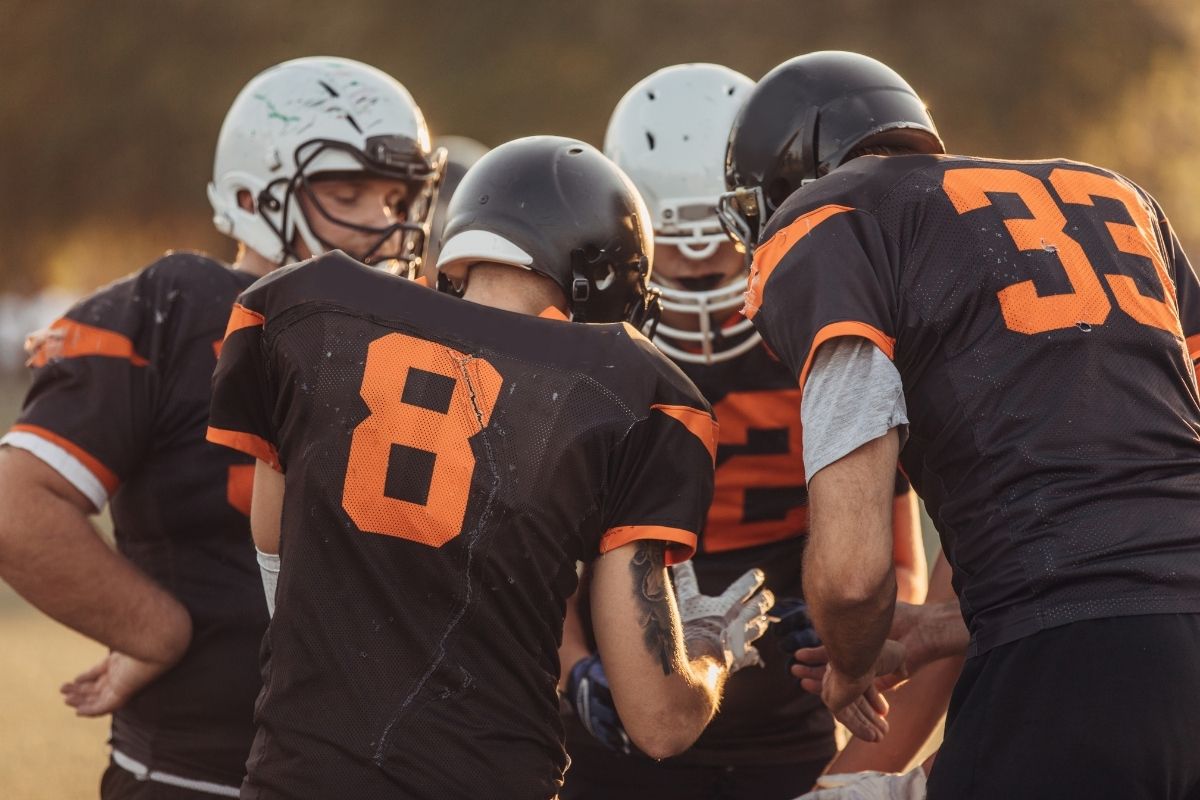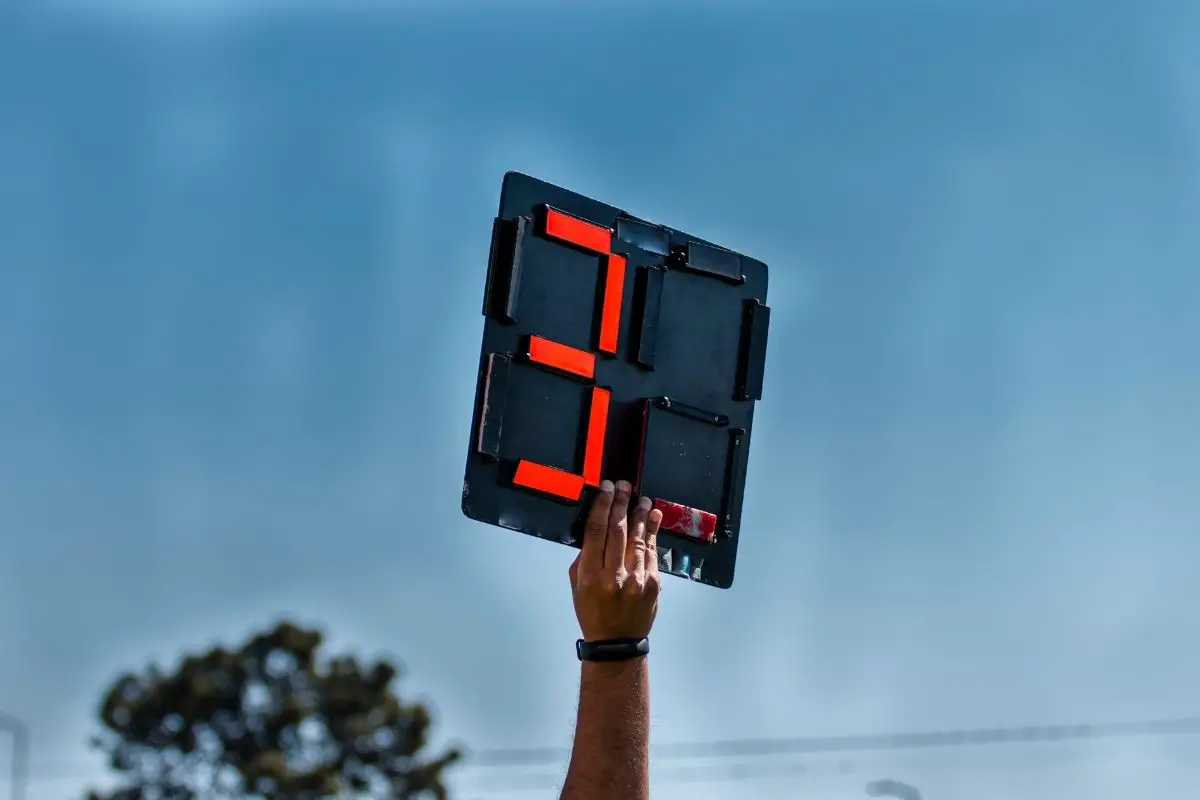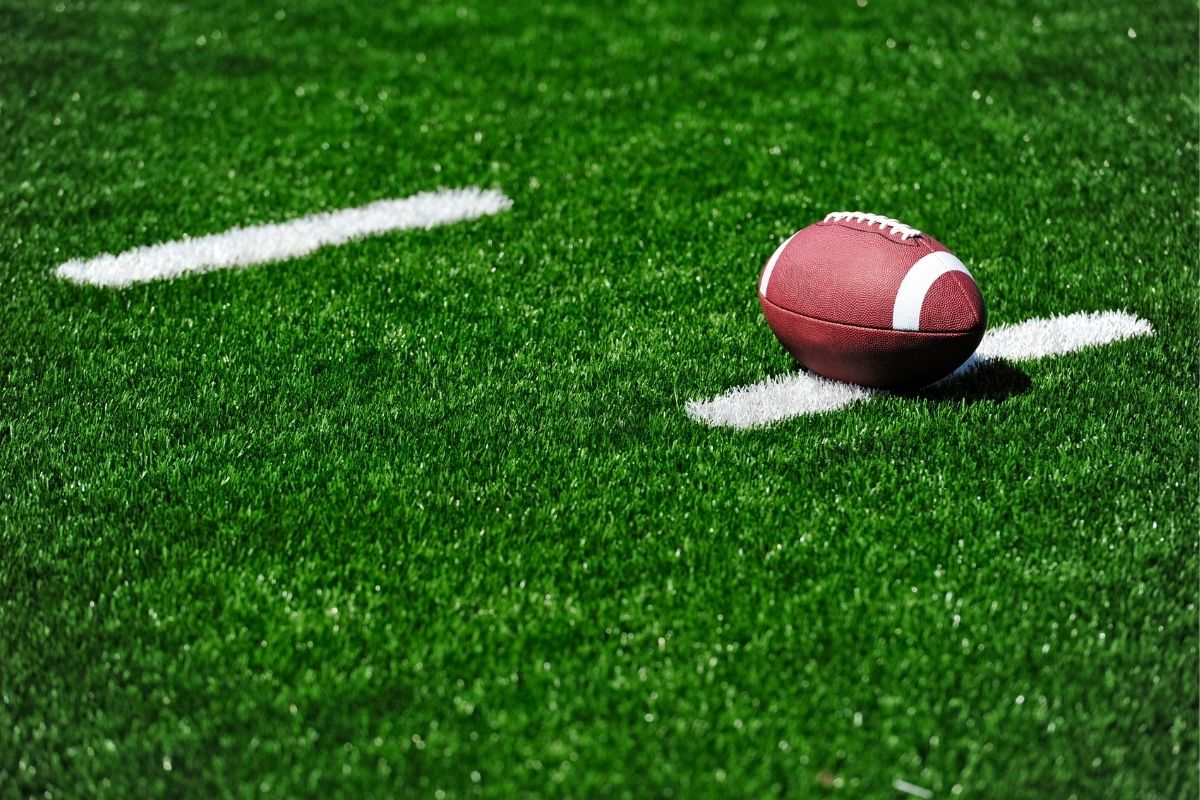If you have ever watched American football, but don’t live in America, then you may have a lot of questions about how the game works.
Of all these questions, the most prominent one will often be “Why do they keep stopping the game so frequently?”


The NFL may look like a game of sprinting and violent tackles, but it is also a sport that revolves heavily around tactics and strategy.
We are all familiar with the image of a huddle, and this practice is used by players to discuss tactics during breaks so that they can be executed once the clock starts again.
But what causes the clock to stop in the first place? If you have tried watching the NFL and don’t understand the rules around clock management, then this guide is here to explain.
We will be covering all the rules surrounding when the clock stops and when it starts again.
The Two Clocks In American Football
Firstly, it is important to understand that there are two clocks in any game of American football.
The game clock dictates how long the game will run for, and is the clock that will be frequently stopped throughout the match.
There is also a play clock, which is a timer that runs after the game clock has been stopped.
Its purpose is to give players a chance to reposition and get ready for the next play within 40 seconds. In some games, this play clock may be as short as 20 seconds.
In the next section, we will look at the game clock and the many reasons for stopping it throughout a match.
The Game Clock
This is the main clock in the NFL, determining how long the game is supposed to run for. The game clock is set to 60 minutes, with the match divided into 15 minute quarters.
Naturally, a game of American football will last much longer than just one hour, since the clock will be frequently stopped throughout the game.
There are several moments during the match that will call for the game clock to be stopped, all of which have been listed below.
Half Time
There is always a 15-minute break between the second and third quarter for half-time.
During the half-time break, teams can recuperate, and group together to discuss tactics for the second half of the match.


When A Ball Goes Out Of Bounds
The clock will be stopped whenever the ball is taken out of bounds.
If it is a loose ball that has gone out of bounds after a kick or throw, then the clock is started again once the ball has been returned to the field.
If the ball is carried out of bounds by a player, then the clock starts again once the referee has spotted the ball and blown the whistle.
This rule is different in the last two minutes of the first half of the game.
In this instance, the clock is restarted on the snap. The snap is when the ball is thrown backwards through a player’s leg to initiate a play.
The clock is also resumed on the snap during the last five minutes of the second half to keep the pace up during the matches final moments.
An Incomplete Forward Pass
When players pass the ball in the ‘End Zone’ of the field, they must have both feet (or any other part of their body other than their hands) on the ground before passing the ball.
If the player did not have both feet on the ground, or no one catches their ball, then the pass is incomplete.
The clock will be stopped upon an incomplete forward pass and restarted once the ball is back in play.
Timeouts
Timeouts can be called by the referees or the players on either team. In the NFL both teams will have three timeouts per half, and each one will last for up to 2 minutes.
In college football, the timeouts are generally shorter, only lasting 90 seconds.
Players can call a timeout at any point during the half, except in a few circumstances.
Timeouts cannot be called consecutively, and any unused timeouts are not carried over to the next half. During overtime, each team will only get two timeouts.
Timeouts may be called to discuss tactics, bring on players from the sidelines, and even to throw off other players when they are about to kick the ball.
The referee will also call a time-out for any foul play, or misbehavior on the part of the players.
The clock will resume once the referee has resolved the issue and declared that the game may continue.
Other Causes
The clock will also be stopped whenever a player scores or lands a touchdown.
The clock restarts once the ball is snapped and put back into play. The clock may also briefly stop when the ball is passed between teams.
In high school and college football, the clock will be briefly stopped when a team earns a first
down, however, this rule does not carry over to the NFL.
In the NFL during a fair-catch kick, the clock technically starts from the moment the kick takes place and stops again once the play has concluded.
What Happens When The Clock Runs Out
Once the game clock runs out, the game is officially over, any plays occurring when this happens will be allowed to continue until they have concluded.
After this, the game will enter overtime, which is the final chance for players to alter the score before the end of a match.
Conclusion
American football is a very strategic sport, and it can be quite confusing to watch for those who are not accustomed to how the game works.
Hopefully, you now understand how the game’s clock works and the many reasons it may be stopped during a match.
This will make it less confusing the next time you watch NFL, as you won’t be wondering why the game keeps stopping.
- Can You Play Pickleball on Grass? Tips and Tricks - June 12, 2023
- Do Pickleballs Wear Out? Everything You Need to Know - June 12, 2023
- Can You Play Pickleball on Concrete? A Guide to Playing on Hard Surfaces - June 12, 2023








